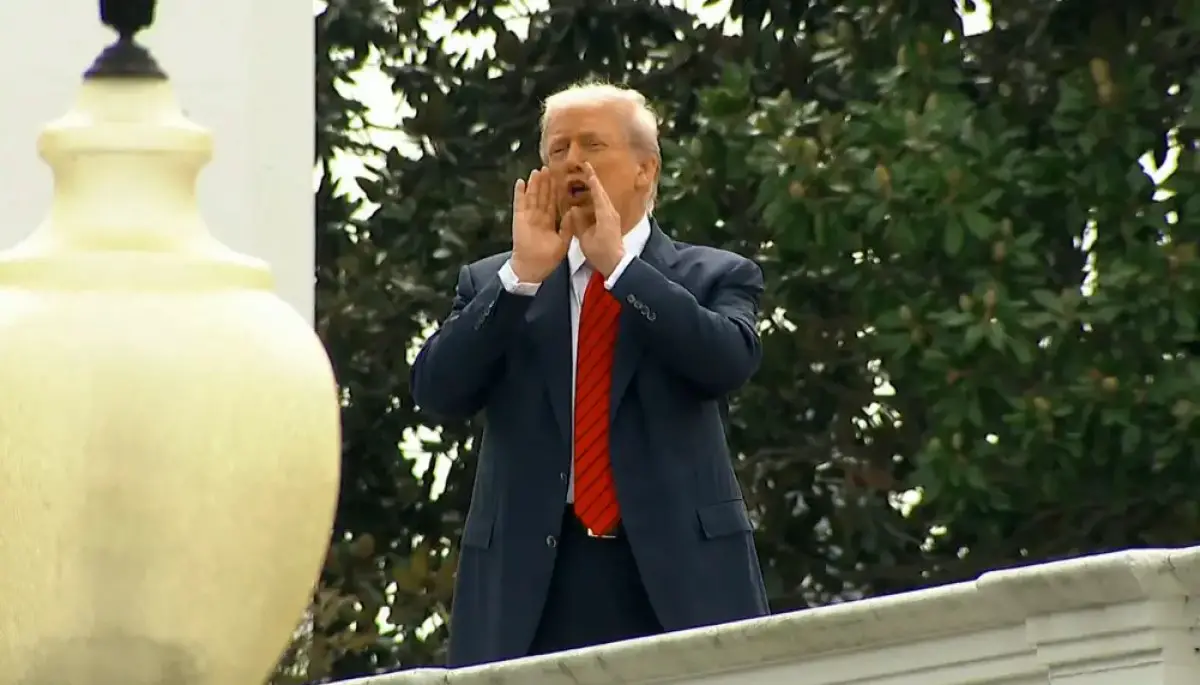In the long and storied history of the White House, presidents have made countless memorable appearances from its iconic balconies, porticos, and windows. However, August 5, 2025, marked a first in presidential history that left observers, journalists, and the American public scratching their heads and reaching for their cameras. What unfolded that afternoon would quickly become one of the most talked-about and debated presidential moments in recent memory, sparking conversations that extended far beyond traditional political discourse.
The scene that captivated the nation was both simple and extraordinary: the President of the United States, in full presidential attire, making an unscheduled and highly unusual appearance on the roof of the White House. This unexpected spectacle would generate thousands of social media posts, countless news articles, and a national conversation about presidential behavior, security protocols, and the ever-evolving nature of modern political theater.
1 of 20
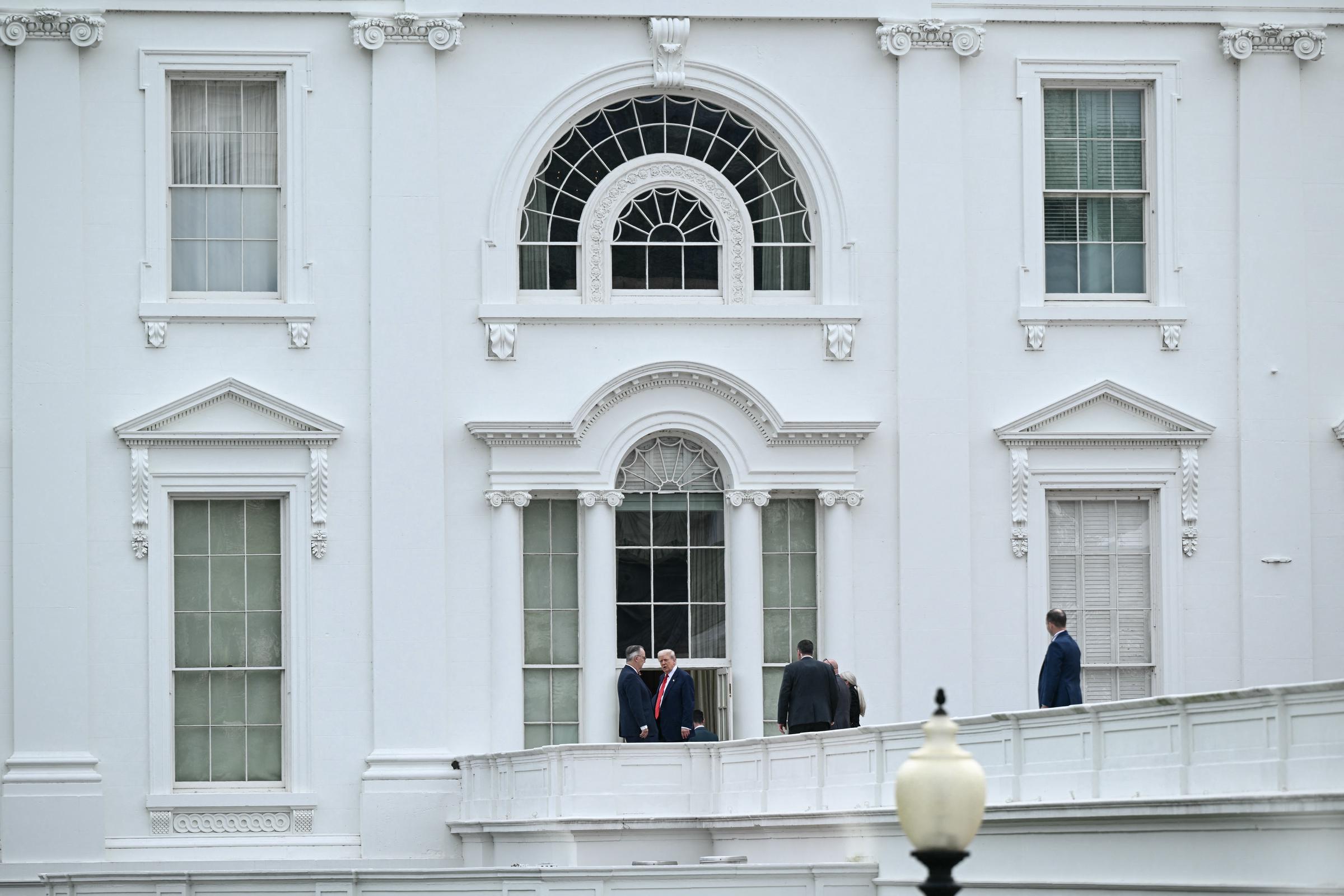
The Unprecedented Scene Unfolds
On that warm August afternoon, President Donald Trump, 79, emerged onto the White House roof in a manner that defied both protocol and expectation. Dressed in his characteristic dark suit, crisp white shirt, and signature red tie, the president appeared to be conducting what could only be described as an impromptu rooftop tour of the nation’s most famous residence.
2 of 20
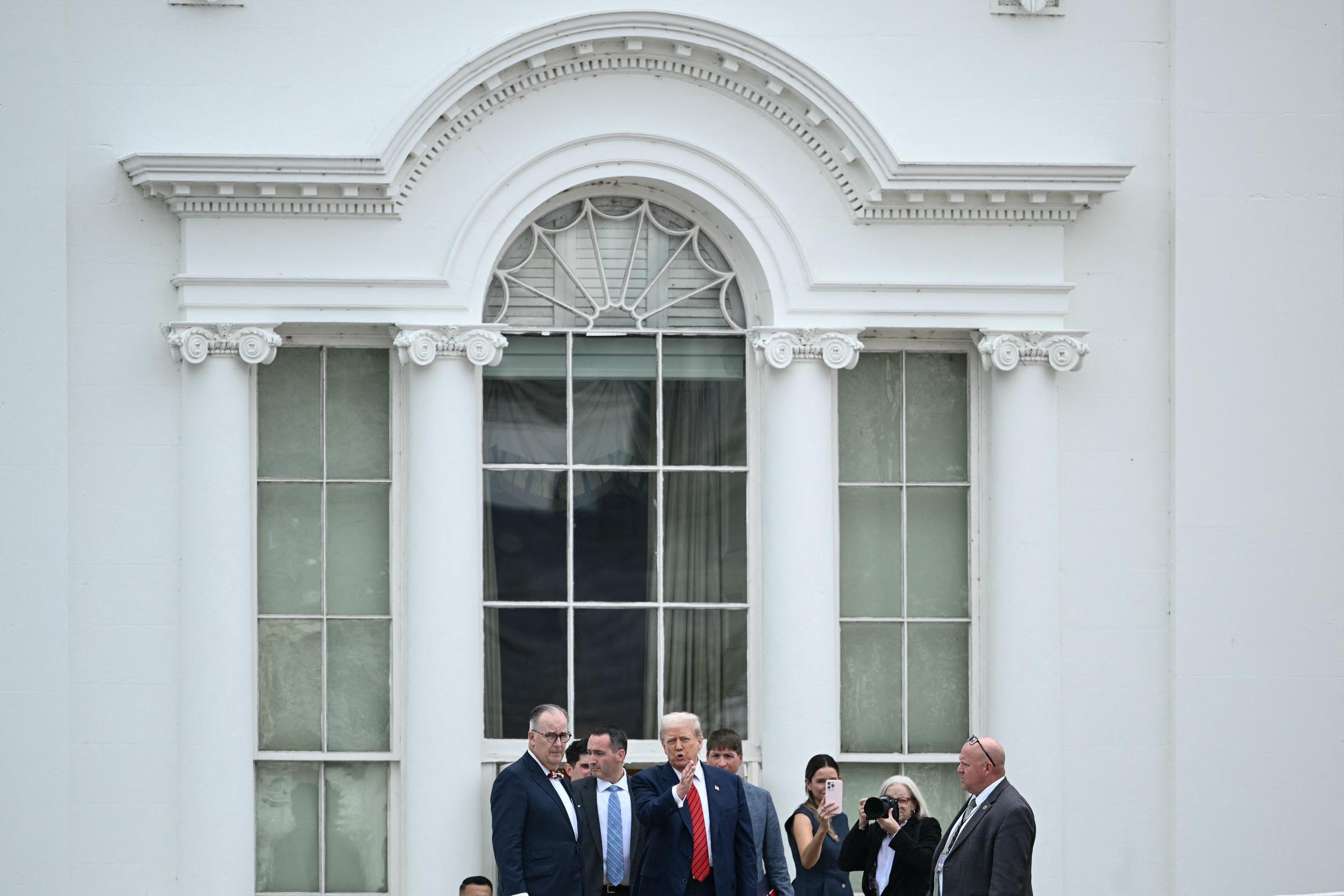
The sight was nothing short of extraordinary. There, high above the carefully manicured South Lawn and the bustling activity of the West Wing, stood the leader of the free world, surveying his domain from a vantage point that no previous president had publicly occupied. Security staff members followed closely behind, their presence a stark reminder of the serious security considerations involved in such an unprecedented presidential appearance.
3 of 20
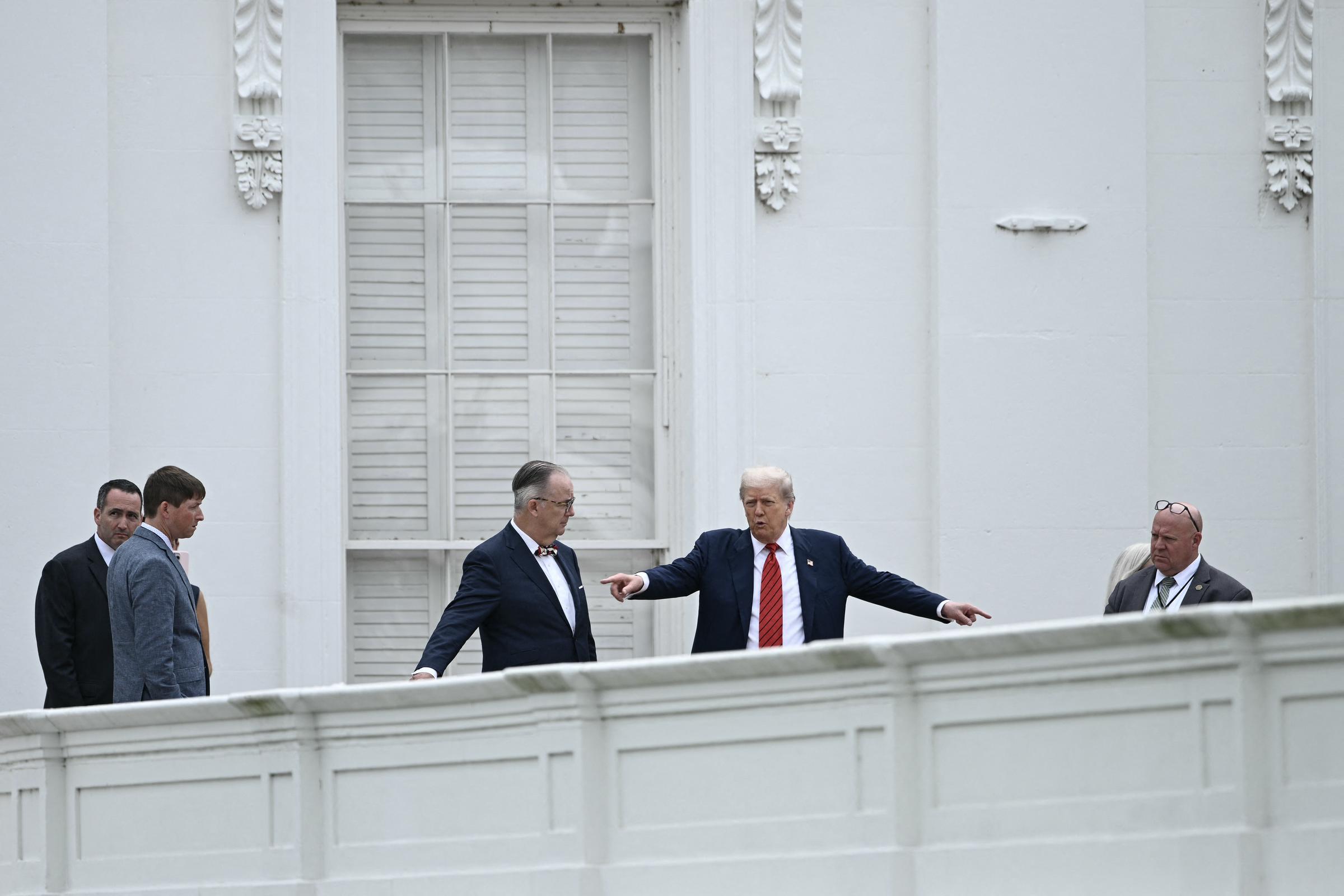
The visual was striking and surreal. Against the backdrop of Washington D.C.’s skyline, with the Washington Monument visible in the distance, Trump moved across the rooftop with what appeared to be familiarity and purpose. His security detail, clearly prepared for this unusual excursion, maintained their protective positions while allowing the president the freedom to explore and gesture from his elevated perch.
4 of 20
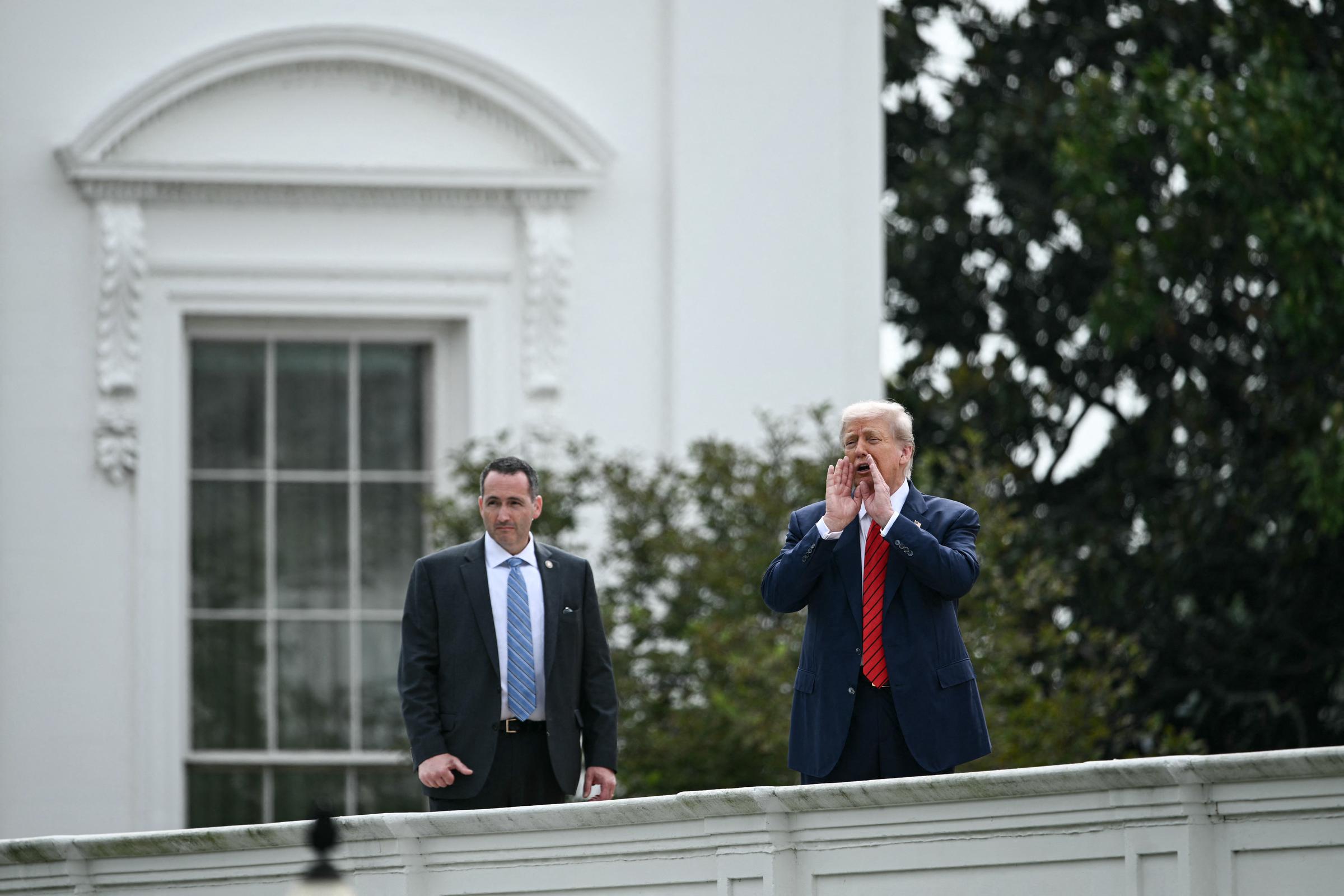
What made the scene even more remarkable was the apparent spontaneity of the moment. This was not a planned photo opportunity or a carefully orchestrated media event. Instead, it appeared to be an impromptu decision by the president to take his business to the roof, creating a moment that was both unprecedented and completely unscripted.
5 of 20
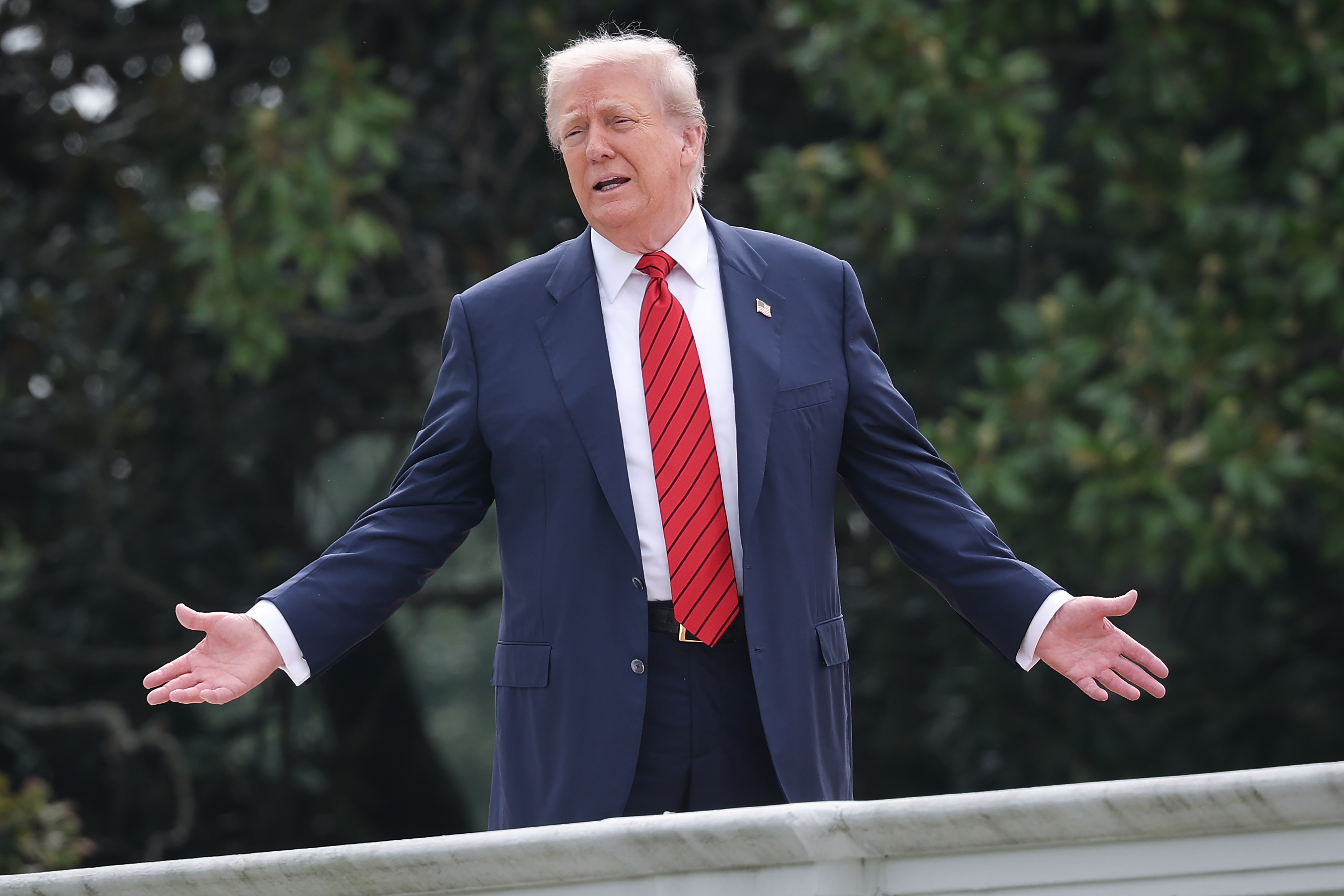
The Presidential Explanation: “Just Taking a Little Walk”
As reporters on the ground spotted the unusual sight and began calling out questions, President Trump responded with characteristic directness and apparent nonchalance. When one journalist shouted from below, “Mr. President, what are you doing up there?” Trump’s response was refreshingly simple: “Just taking a little walk.”
The casualness of his response stood in stark contrast to the extraordinary nature of his location. Here was the President of the United States, standing on the roof of the White House, treating the situation as if it were the most natural thing in the world. His demeanor suggested that rooftop strolls might be a regular part of his daily routine, though no previous president had ever been documented taking such liberties with the executive mansion’s architecture.
6 of 20
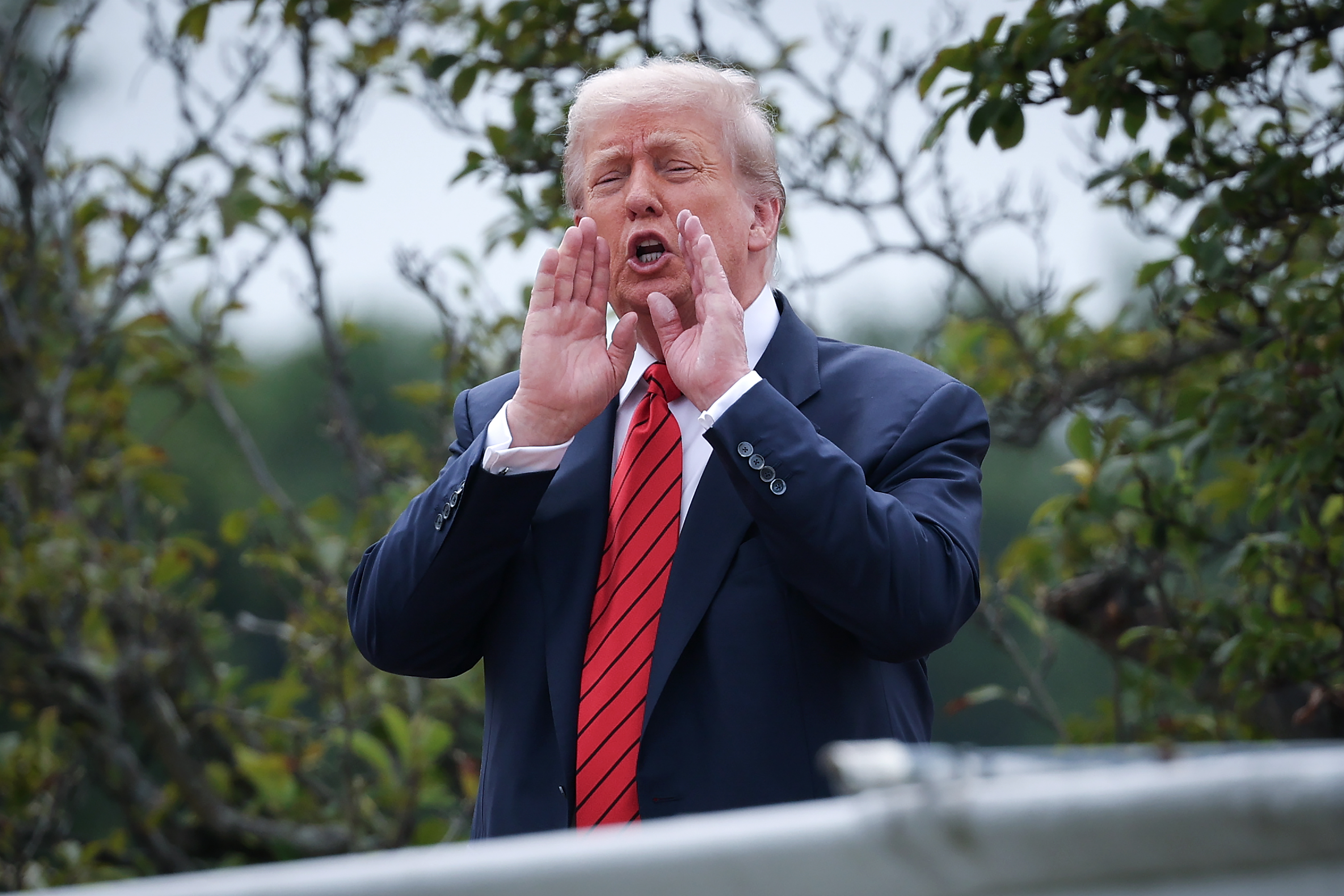
When pressed further by reporters about his activities, specifically when asked “What are you building?” Trump provided additional context that suggested this was more than just a casual walk. “It goes with the ballroom, which is on the other side…Something beautiful,” he replied while gesturing expansively with his hands. These comments indicated that the rooftop appearance was connected to renovation or construction plans for the White House, adding a layer of presidential business to what initially appeared to be pure spectacle.
7 of 20
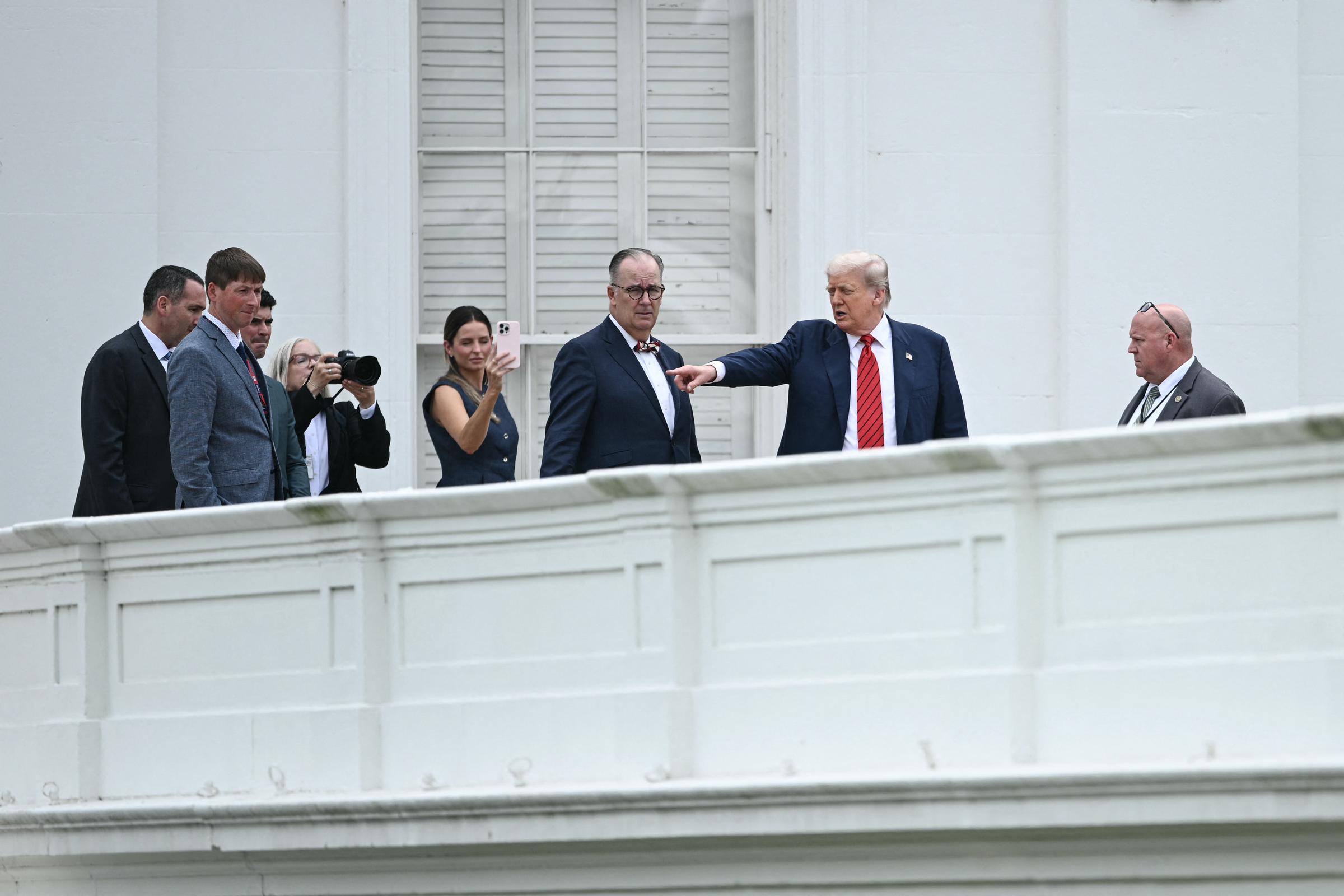
The president’s gestures and animated responses from the rooftop created a theatrical quality to the entire scene. With his arms spread wide and his voice carrying across the South Lawn, Trump transformed the roof of the White House into an impromptu stage for presidential communication. The image of the commander-in-chief cupping his hands to project his voice down to reporters below became an instantly iconic moment that would be replayed across news networks and social media platforms.
8 of 20
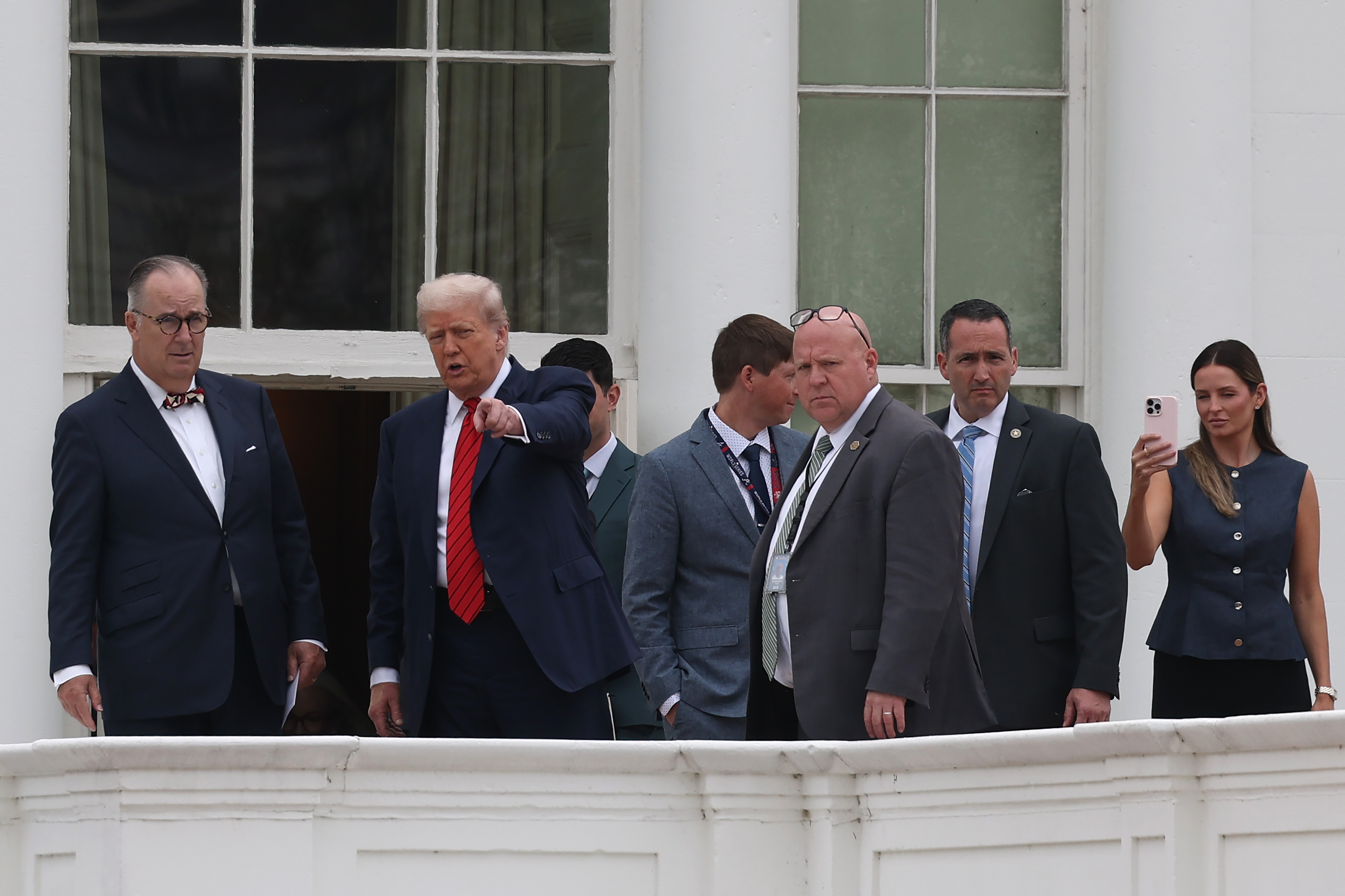
Architectural Context and Professional Presence
Adding legitimacy and context to what might otherwise have been dismissed as a presidential whim was the presence of architect James C. McCrery, who accompanied Trump throughout the rooftop tour. McCrery’s presence suggested that this was indeed a working visit related to renovation or construction plans for the White House complex.
The inclusion of a professional architect elevated the significance of the rooftop appearance from mere spectacle to substantive presidential business. As Trump pointed across the White House roof during his tour, highlighting areas apparently slated for renovation, it became clear that this unconventional presidential moment was connected to concrete plans for improving or modifying the executive mansion.
9 of 20
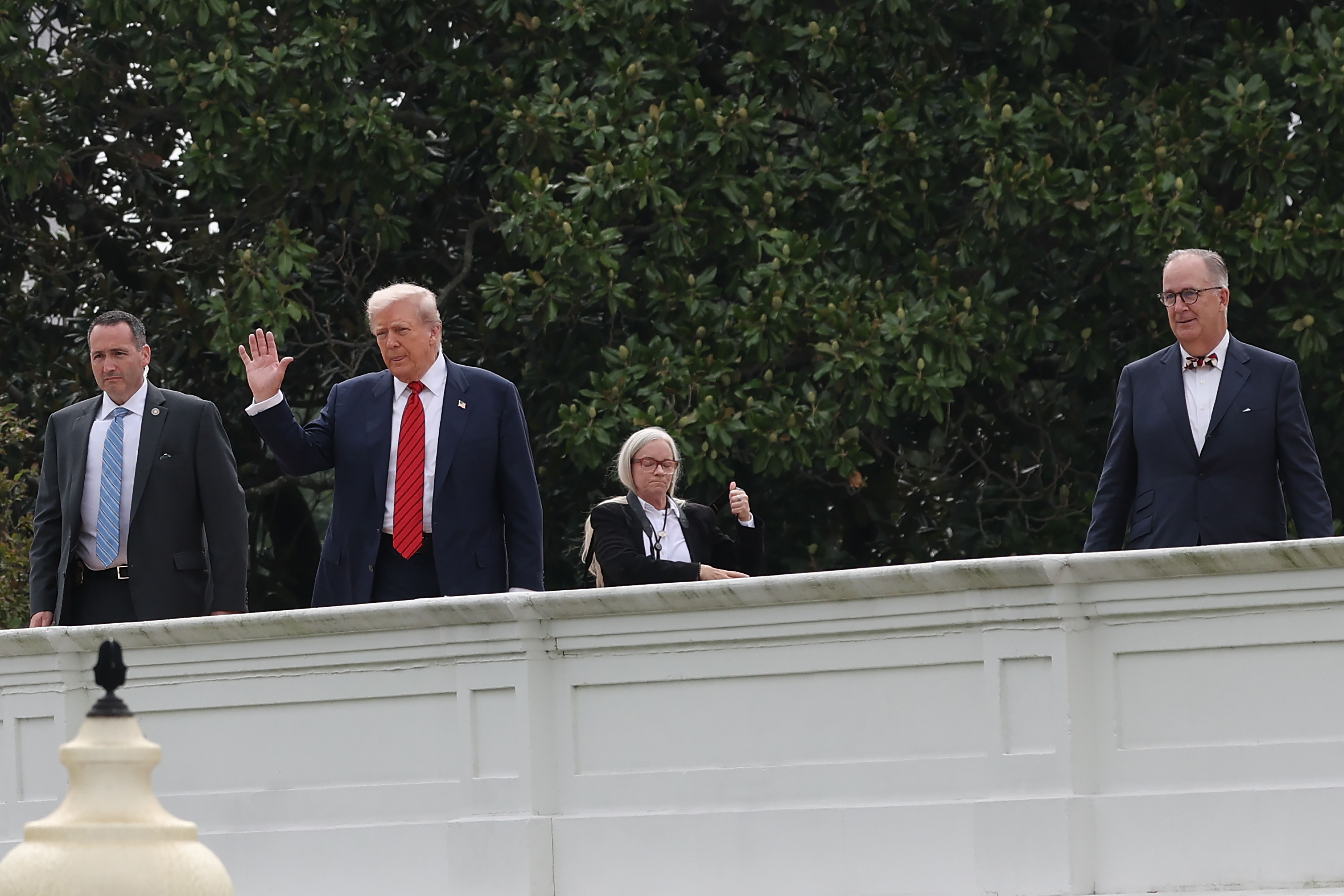
The collaboration between Trump and McCrery on the rooftop demonstrated the president’s hands-on approach to overseeing improvements to the White House. Rather than simply reviewing architectural plans in the Oval Office or a conference room, Trump chose to examine the proposed work sites firsthand, even if that meant climbing onto the roof of the most secure building in America.
10 of 20
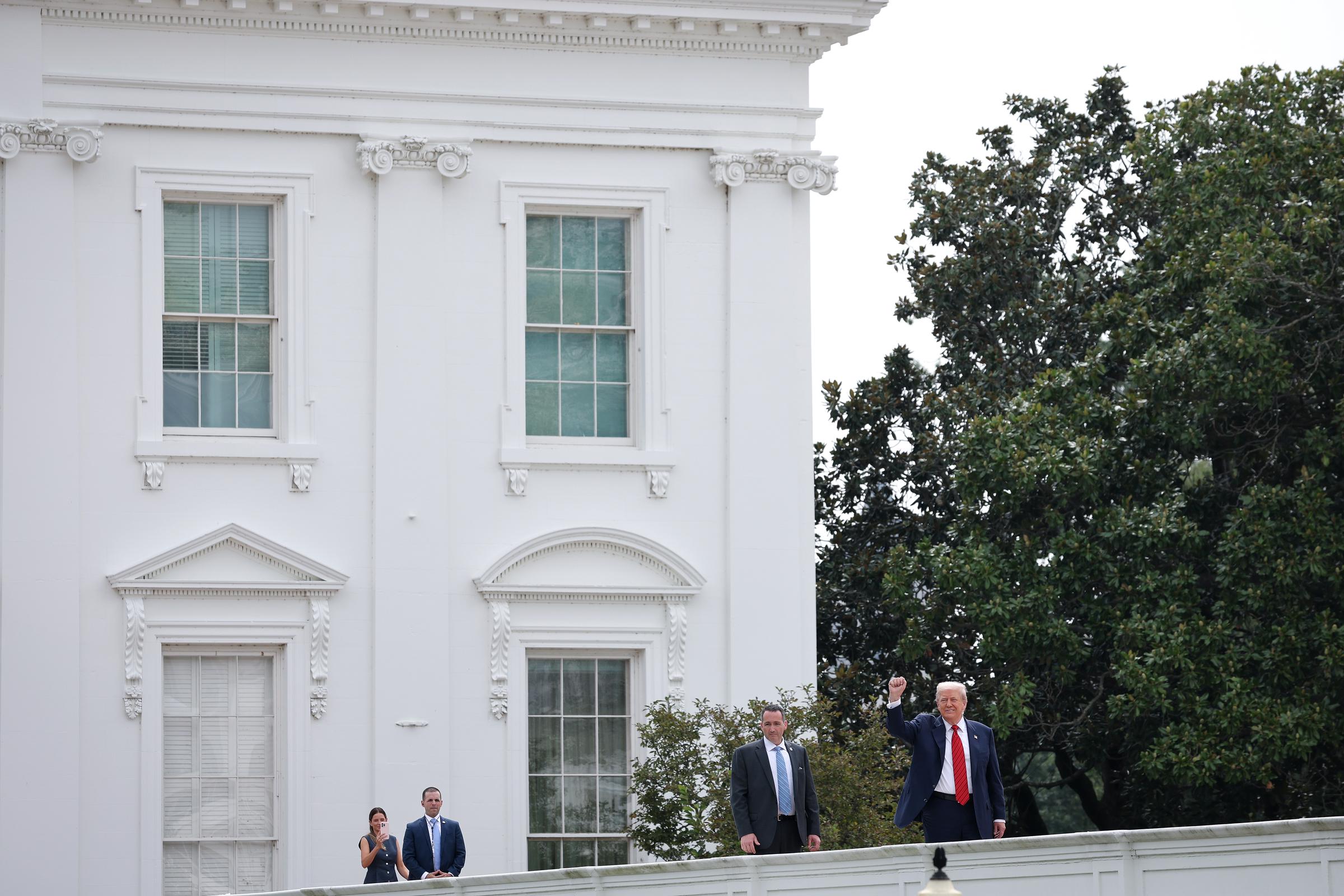
The professional nature of the consultation was evident in the detailed discussions and pointing gestures observed during the rooftop tour. Trump appeared to be receiving explanations from McCrery about various aspects of the proposed work, while also providing his own input and direction. The presence of additional aides and security staff created a mobile meeting environment that transformed the White House roof into an unconventional but functional workspace.
11 of 20
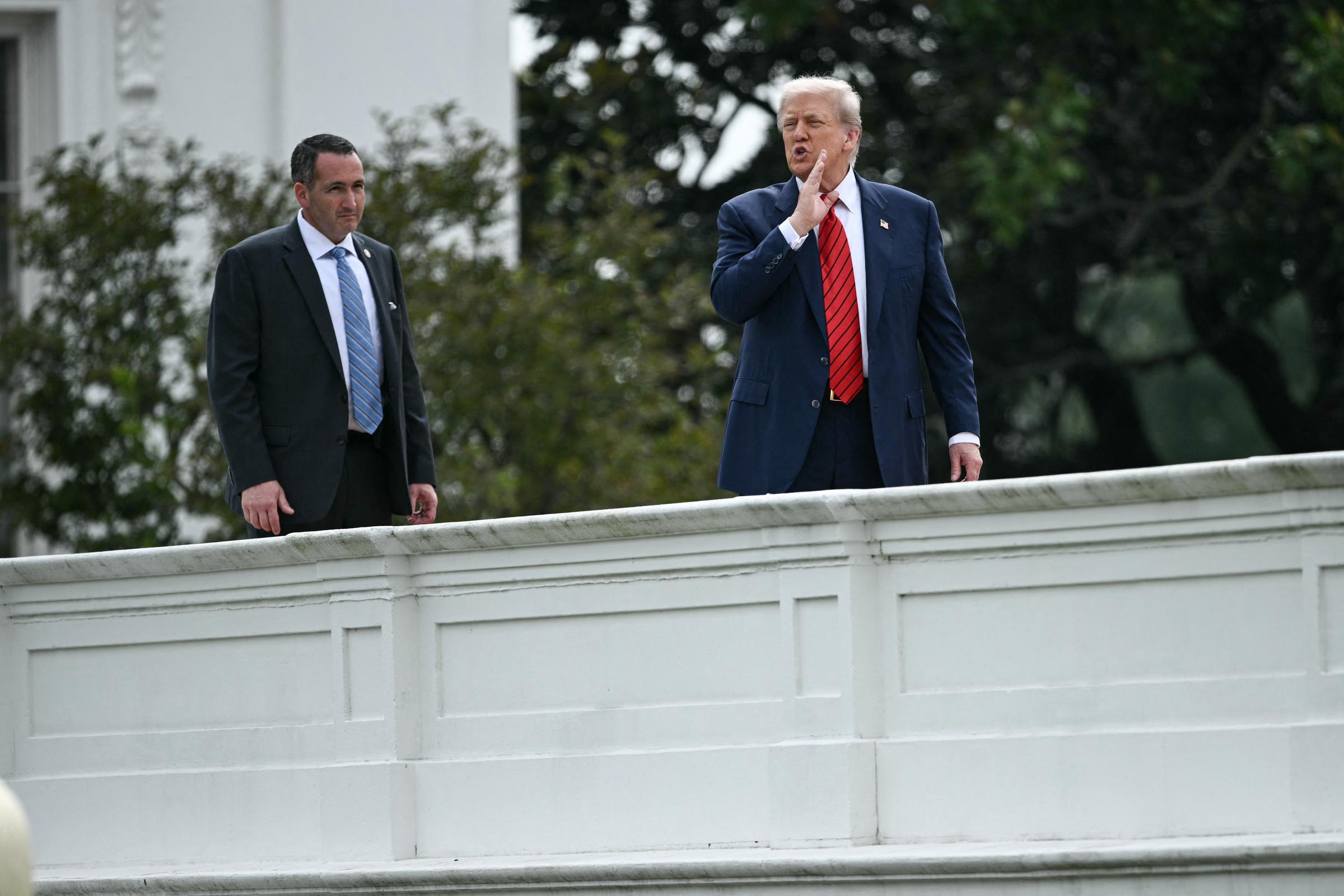
Social Media Eruption and Public Response
The unprecedented nature of Trump’s rooftop appearance triggered an immediate and massive response across social media platforms. Within minutes of the first photos and videos appearing online, the hashtags related to Trump and the White House roof began trending worldwide, demonstrating the public’s fascination with this unique presidential moment.
12 of 20
The social media response ranged from humorous commentary to genuine concern, reflecting the diverse ways Americans process unusual political events. One of the most popular early responses came from a user who quipped, “Maybe he got lost?” This comment captured the absurd quality that many observers felt when witnessing a sitting president casually strolling across the White House roof.
13 of 20
The humor continued with increasingly creative observations. “Looks like the nurses took their eyes off him for a minute,” wrote one commenter, playing on concerns about presidential age and supervision. Another user added, “Lol he likes to feel on top of the World so bad he has to climb on top of the Whitehouse to feel powerful and important lol,” suggesting that the rooftop appearance was motivated by the president’s ego and desire for dramatic effect.
The comedic responses reflected a broader tendency among social media users to process extraordinary political moments through humor and memes. Comments like “Giving some comic relief” indicated that many Americans viewed the rooftop appearance as entertainment rather than cause for serious concern.
14 of 20
However, not all responses were lighthearted. Some comments reflected deeper political tensions and concerns about presidential behavior. “Not his house!” remarked one user, followed by another who added, “He’s acting like he owns the place. It’s ‘the People’s house’, not his!” These responses highlighted ongoing debates about presidential authority and the symbolic significance of the White House as a public institution rather than private residence.
15 of 20
Security Implications and Concerns
Among the most serious aspects of the public response were questions about security protocols and the appropriateness of allowing a sitting president to appear on the White House roof. “I can’t believe the secret service let him up there ,” wrote one concerned observer, highlighting the unusual nature of the security arrangement required for such an appearance.
The security implications of a presidential rooftop appearance are indeed significant. The White House roof represents one of the most secure areas of the executive mansion, typically off-limits to anyone except essential security and maintenance personnel. The decision to allow the president to appear publicly on the roof required careful coordination and risk assessment by the Secret Service.
16 of 20
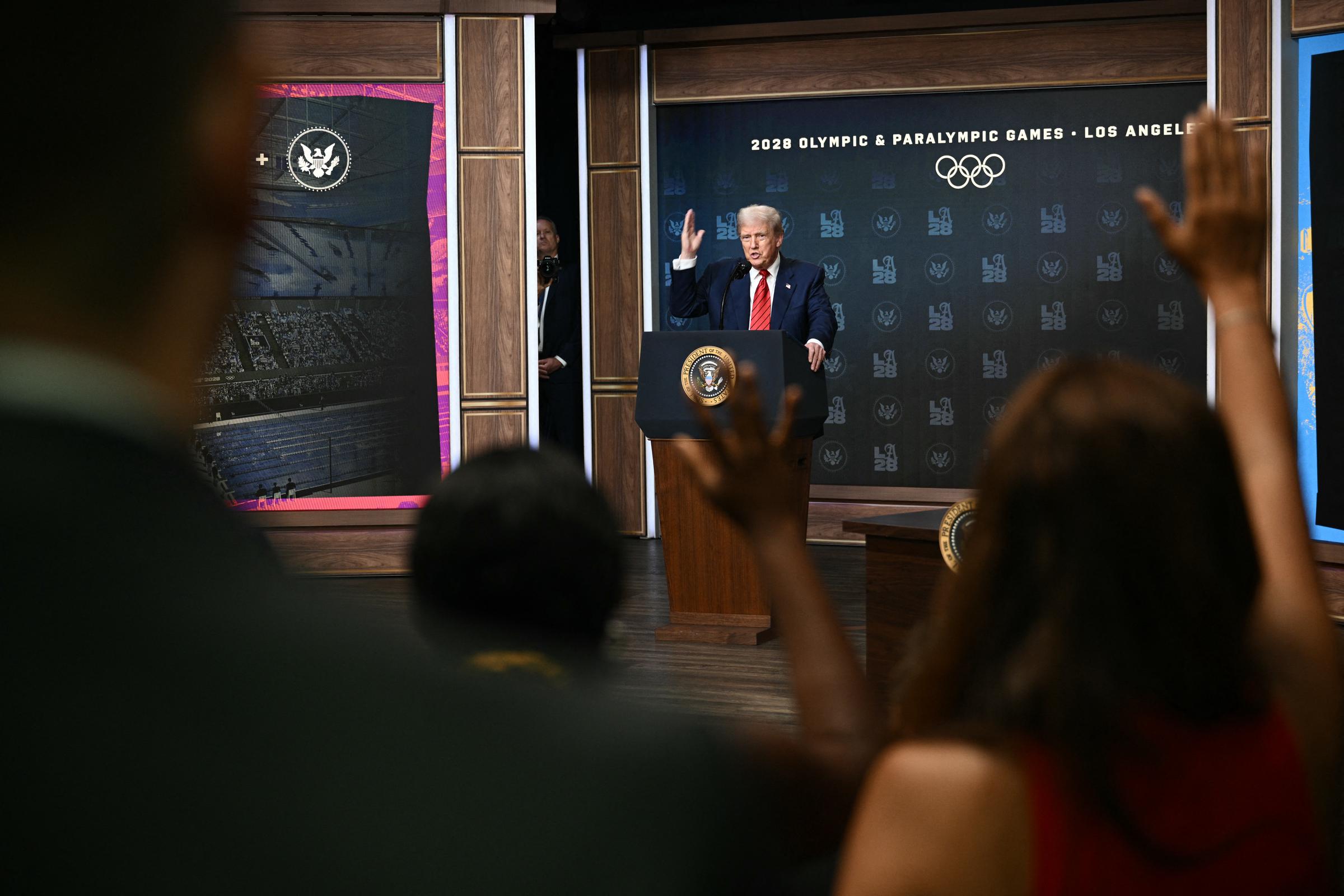
The visible presence of security staff throughout the rooftop tour demonstrated the serious security measures in place, even for this unconventional presidential activity. Multiple agents were observed maintaining protective positions around the president while allowing him the freedom to move and communicate with reporters below. This delicate balance between security requirements and presidential autonomy created a unique operational challenge for the Secret Service.
The security considerations extended beyond immediate physical protection to broader concerns about establishing precedents for presidential appearances in unconventional locations. Allowing a president to appear publicly on the White House roof could potentially create expectations for future administrations or inspire copycat attempts by unauthorized individuals seeking to access the building’s exterior.
Supportive Voices and Positive Interpretations
While much of the social media response focused on humor and concern, some observers offered positive interpretations of Trump’s rooftop appearance. These supportive voices framed the unusual presidential moment as evidence of an engaged, hands-on leadership style rather than concerning behavior.
“Ooh, a presidential renovation? Can’t wait to see the new look! ” wrote one enthusiastic supporter, focusing on the constructive aspects of the rooftop visit and expressing excitement about potential improvements to the White House. This response represented a segment of public opinion that viewed the president’s direct involvement in renovation planning as a positive demonstration of his commitment to improving the executive mansion.
17 of 20
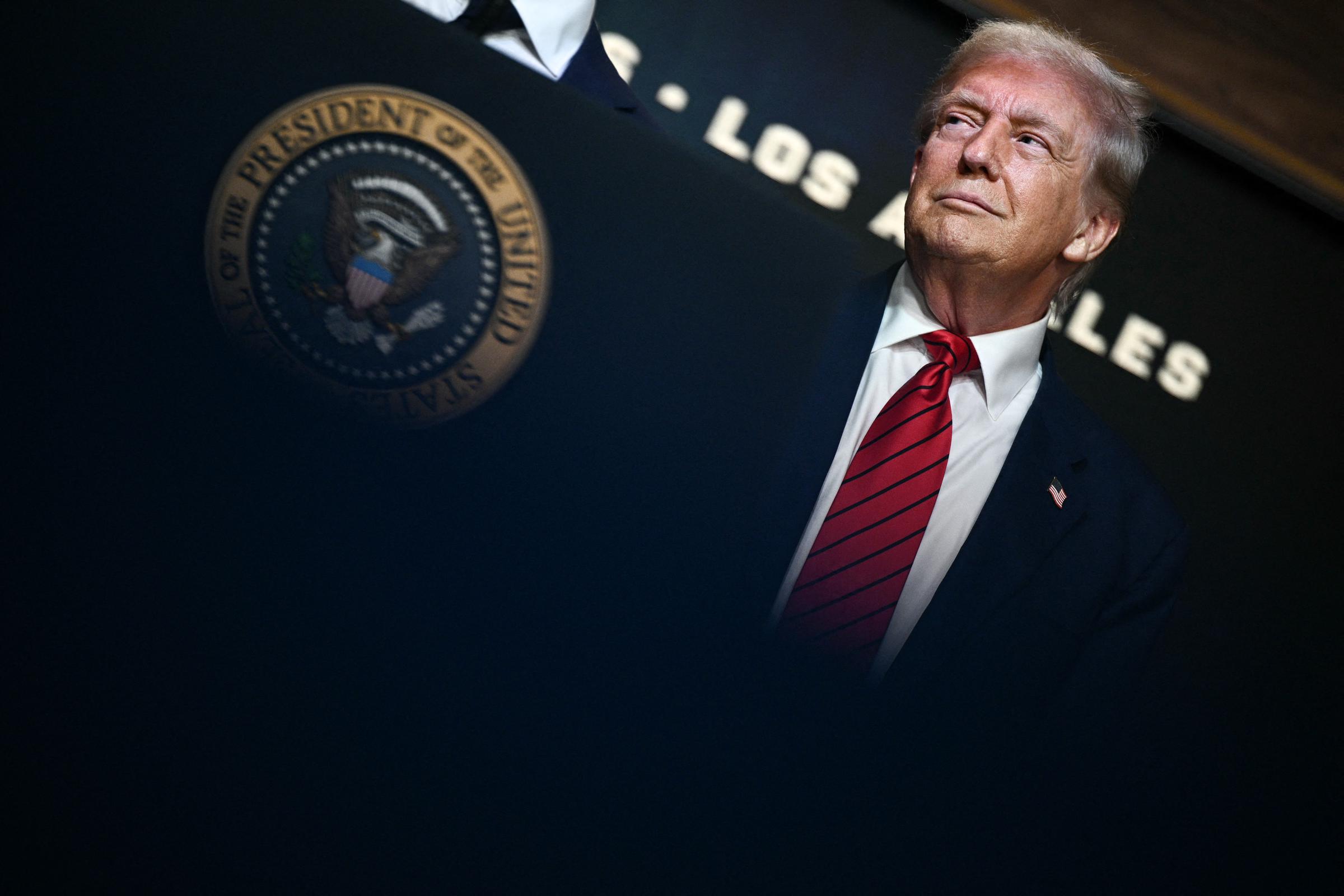
Another supporter offered a broader political interpretation: “Honestly, it’s great to see a hands-on president. The White House could use some updates, just like our country. Let’s get it done.” This comment connected the rooftop appearance to larger themes of presidential activism and national renewal, suggesting that Trump’s unconventional approach represented a refreshing departure from traditional presidential limitations.
These positive responses highlighted the diverse ways Americans interpret presidential behavior, with some viewing the rooftop appearance as evidence of Trump’s unique approach to leadership rather than cause for concern. The supportive commentary emphasized themes of presidential engagement, practical leadership, and willingness to break with conventional protocols in service of substantive goals.
18 of 20
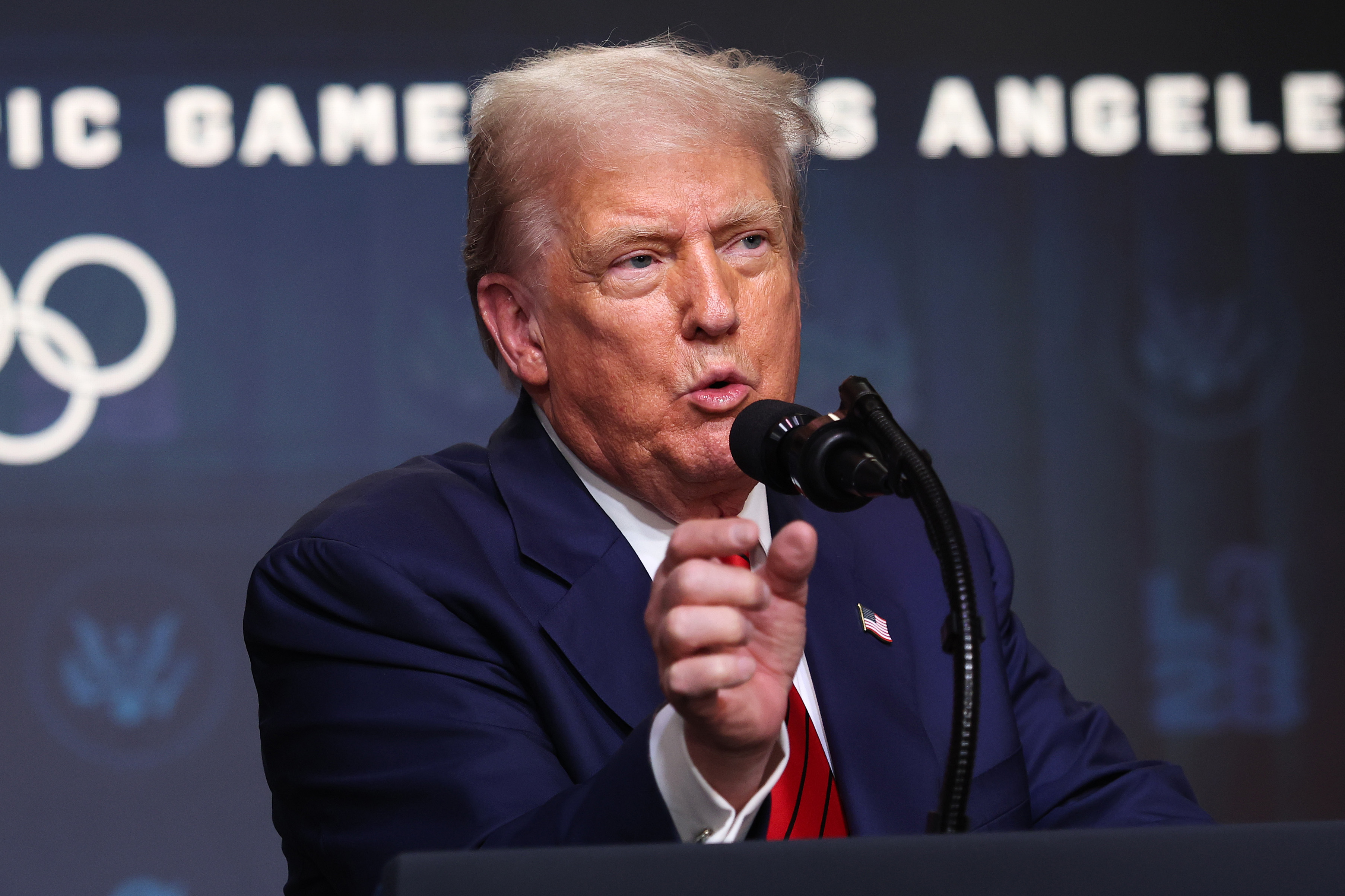
Historical Context and Presidential Precedents
To fully understand the significance of Trump’s rooftop appearance, it’s essential to place it within the broader context of presidential behavior and White House history. While presidents have certainly made memorable appearances from various locations within the White House complex, none had previously been documented taking such liberties with the building’s architecture.
19 of 20
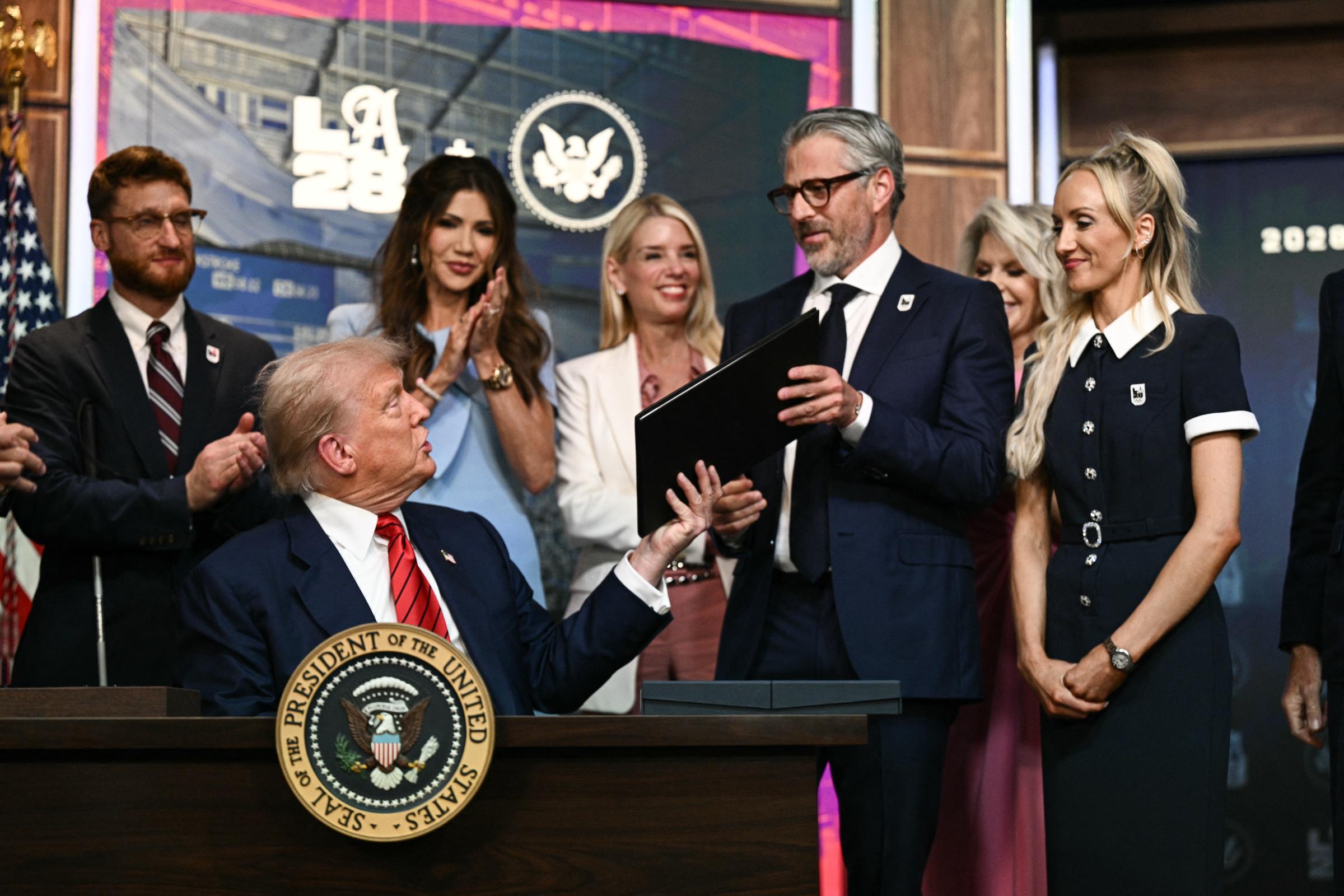
The White House has served as both a working office and symbolic residence for American presidents since John Adams first occupied the building in 1800. Over more than two centuries, presidents have used various locations within the complex for public appearances, from the famous Truman Balcony to the South Lawn for helicopter departures. However, the roof had remained off-limits for public presidential activities.
Presidential communication has evolved significantly over the decades, with each generation of leaders adapting to new technologies and opportunities for public engagement. From Franklin D. Roosevelt’s fireside chats to Ronald Reagan’s skilled use of television, presidents have consistently sought new ways to connect with the American people. Trump’s rooftop appearance can be viewed as part of this ongoing evolution in presidential communication strategies.
The unprecedented nature of the rooftop appearance also reflects broader changes in presidential behavior and public expectations. Modern presidents operate in an environment of constant media scrutiny and social media commentary, creating pressures and opportunities that previous generations of leaders never faced. Trump’s willingness to appear on the White House roof demonstrates how contemporary presidents must navigate between traditional protocols and evolving public expectations for accessibility and engagement.
The Complete Presidential Day: From Rooftop to Executive Action
The rooftop appearance, while capturing the most attention, was actually part of a fuller day of presidential activities that demonstrated the complex nature of modern presidential responsibilities. Following his unusual rooftop tour, Trump transitioned to more traditional presidential duties, including the signing of an executive order in the South Court Auditorium.
The executive order established a task force to support the 2028 Olympics in Los Angeles, representing a significant policy initiative that addressed long-term planning for a major international event. The contrast between the unconventional rooftop appearance and the formal executive order signing highlighted the diverse range of activities that characterize modern presidential leadership.
20 of 20
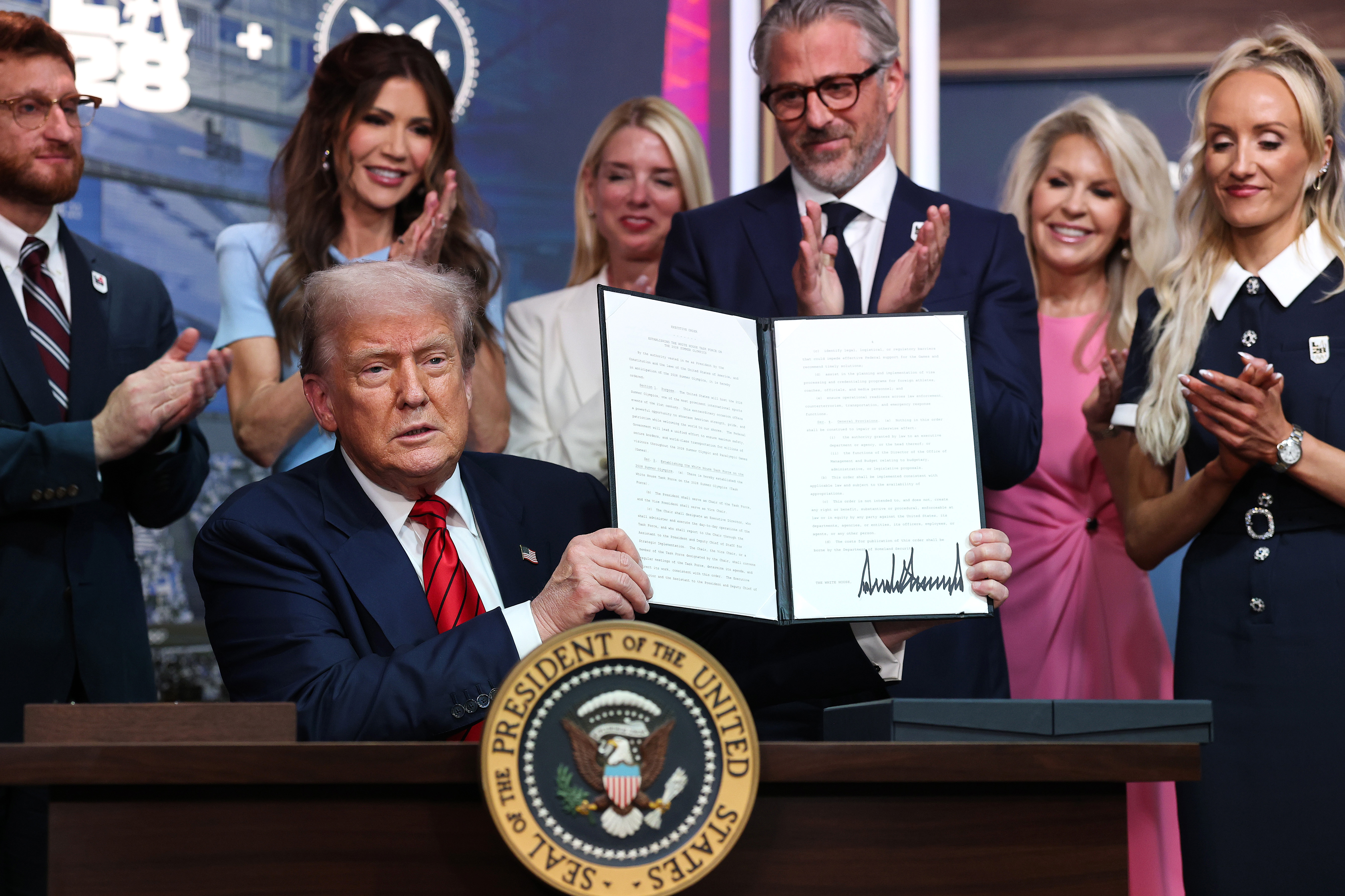
During the formal ceremony, Trump appeared in his element, speaking confidently from the podium and engaging with attendees and press. The presence of LA 2028 Chairman Casey Wasserman and other officials lent gravity and importance to the Olympic-related announcement, creating a stark contrast to the informal nature of the earlier rooftop activities.
The juxtaposition of these events within a single day illustrated the complex and varied nature of presidential responsibilities. From unconventional architectural consultations on the White House roof to formal policy announcements in traditional settings, Trump’s August 5th schedule demonstrated the breadth of activities that modern presidents must manage.
Media Coverage and Analysis
The immediate media response to Trump’s rooftop appearance reflected the challenges journalists face in covering unprecedented presidential behavior. News organizations struggled to contextualize an event that had no historical precedent while attempting to provide meaningful analysis of its significance.
Major news networks quickly picked up the story, with ABC News among the first to report detailed quotes from the president’s rooftop communications with reporters. The coverage highlighted both the unusual nature of the appearance and the president’s explanations for his activities, attempting to provide viewers with factual information while acknowledging the extraordinary circumstances.
The media coverage also reflected broader tensions in contemporary political journalism, particularly the challenge of covering a president who frequently engages in unconventional behavior. Journalists had to balance factual reporting with analysis of whether the rooftop appearance represented normal presidential activity or something more concerning.
Editorial responses varied significantly, with some outlets treating the incident as harmless presidential eccentricity while others raised questions about judgment and appropriateness. These varied interpretations reflected broader political divisions in American media and society, with different outlets emphasizing different aspects of the story based on their editorial perspectives.
Broader Implications for Presidential Norms
Trump’s rooftop appearance raises important questions about presidential norms and the evolution of acceptable behavior for American leaders. The incident represents a clear departure from traditional protocols while simultaneously demonstrating the president’s authority to make decisions about his own activities and communications.
The establishment of new presidential precedents through unconventional behavior has long-term implications for future administrations. Trump’s willingness to appear on the White House roof may create expectations or opportunities for future presidents to engage in similarly unconventional activities, potentially changing the nature of presidential communication and accessibility.
The incident also highlights ongoing debates about the appropriate balance between presidential autonomy and institutional constraints. While presidents clearly have significant authority over their own activities, they also operate within systems of advisors, security protocols, and traditional expectations that typically influence their behavior.
Public Discourse and Democratic Engagement
Perhaps most significantly, Trump’s rooftop appearance demonstrates the continuing evolution of public discourse and democratic engagement in the digital age. The immediate and widespread social media response to the incident shows how quickly unusual political events can capture public attention and generate nationwide conversation.
The diverse range of responses – from humor to concern to support – reflects the healthy diversity of opinion that characterizes American democracy. Rather than a monolithic response, the public engaged with the rooftop appearance in ways that reflected their individual perspectives and political orientations.
The incident also demonstrates how modern presidents must navigate an environment where every action is subject to immediate scrutiny and interpretation by millions of citizens equipped with smartphones and social media accounts. This reality creates both opportunities and challenges for presidential communication and behavior.
Looking Forward: The Lasting Impact
As the immediate attention surrounding Trump’s rooftop appearance begins to fade, its lasting impact on presidential communication and public expectations remains to be seen. The incident will likely be remembered as a unique moment in American political history, regardless of how one interprets its significance.
The rooftop appearance may inspire future presidents to consider new ways of engaging with the public and demonstrating their involvement in White House operations. Alternatively, it may serve as a cautionary tale about the importance of maintaining traditional presidential protocols and dignity.
For Trump himself, the rooftop appearance represents another example of his willingness to break with conventional expectations and create memorable moments that capture public attention. Whether this approach serves his political interests or creates additional controversies will likely depend on how the public ultimately interprets his unconventional leadership style.
Conclusion: A Moment in Presidential History
The August 5, 2025, rooftop appearance will undoubtedly find its place in the annals of American presidential history as one of the most unusual and memorable moments of Trump’s presidency. Whether viewed as harmless eccentricity, concerning behavior, or innovative leadership, the incident demonstrates the continuing evolution of the American presidency in the 21st century.
The widespread public engagement with the rooftop appearance, from social media commentary to news analysis, shows how modern democratic discourse adapts to unexpected events and incorporates them into ongoing political conversations. The diversity of responses reflects the healthy pluralism that characterizes American political culture, even in moments of unprecedented presidential behavior.
Ultimately, Trump’s rooftop walk serves as a reminder that the American presidency continues to evolve and surprise, even after more than two centuries of constitutional government. Whether such evolution represents positive innovation or concerning departure from established norms remains a matter of ongoing democratic debate – exactly as the founders intended when they created a system designed to accommodate the unexpected while maintaining essential institutional stability.
The image of a sitting president calling down to reporters from the White House roof will likely endure as one of the most memorable moments of early 21st-century American politics, regardless of how history ultimately judges its significance or appropriateness.
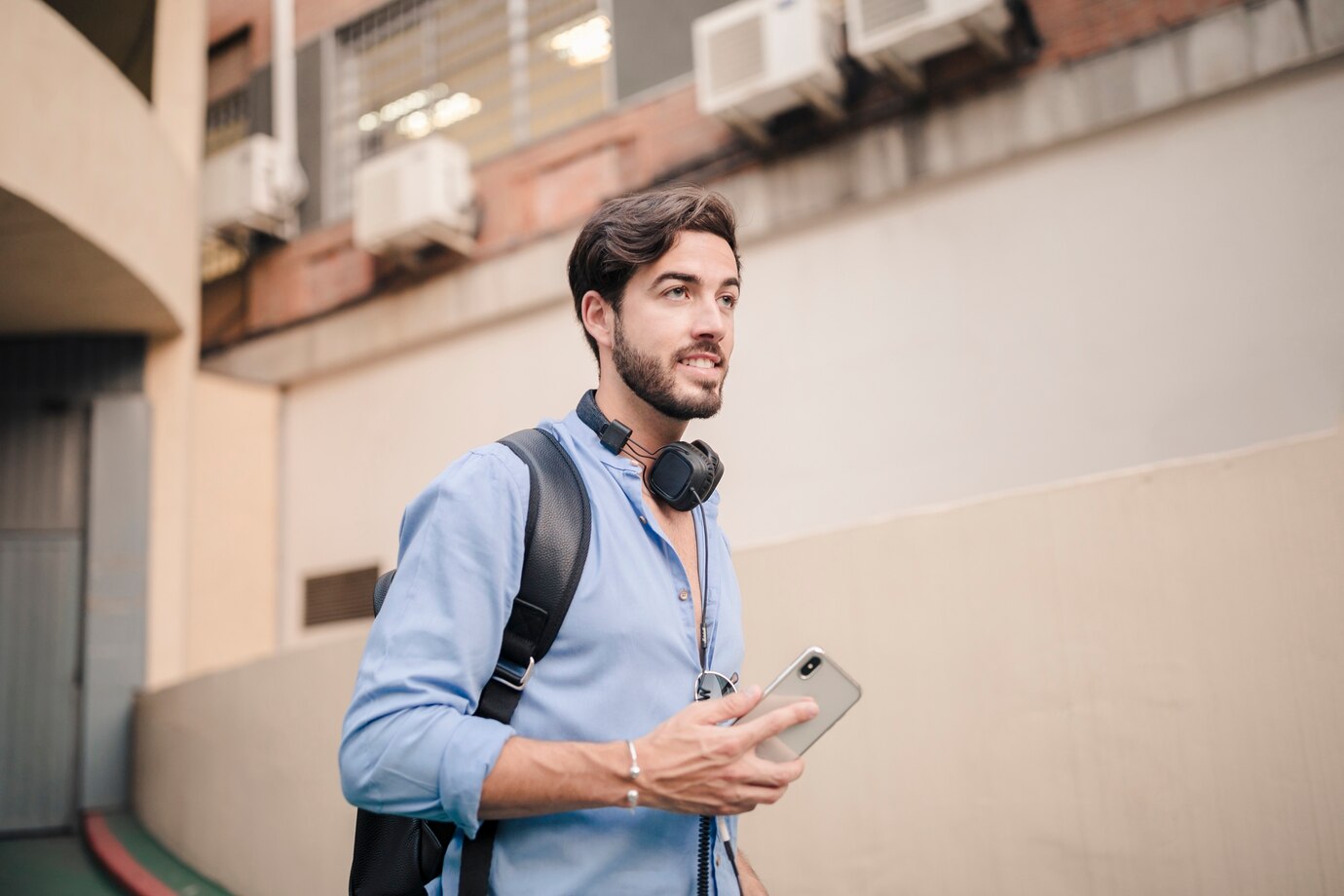
Adrian Hawthorne is a celebrated author and dedicated archivist who finds inspiration in the hidden stories of the past. Educated at Oxford, he now works at the National Archives, where preserving history fuels his evocative writing. Balancing archival precision with creative storytelling, Adrian founded the Hawthorne Institute of Literary Arts to mentor emerging writers and honor the timeless art of narrative.
